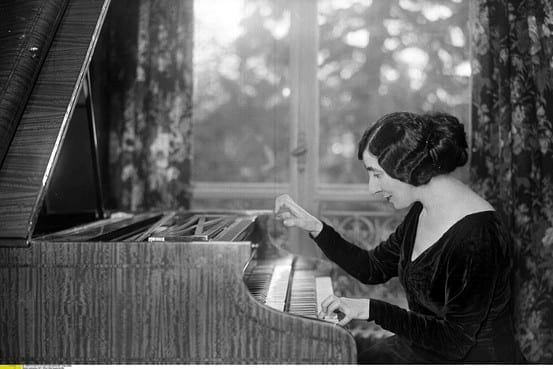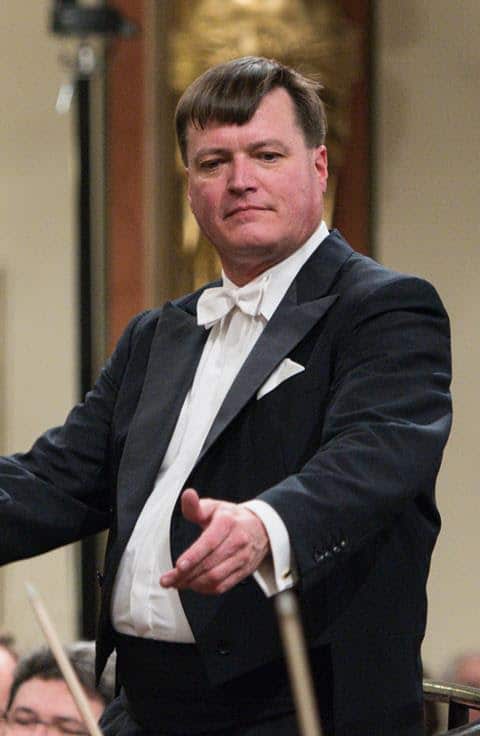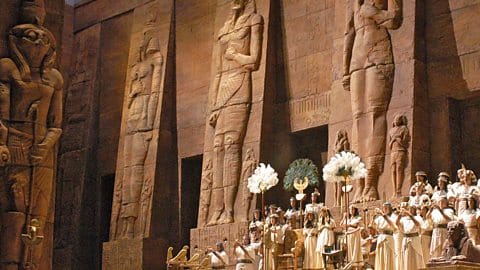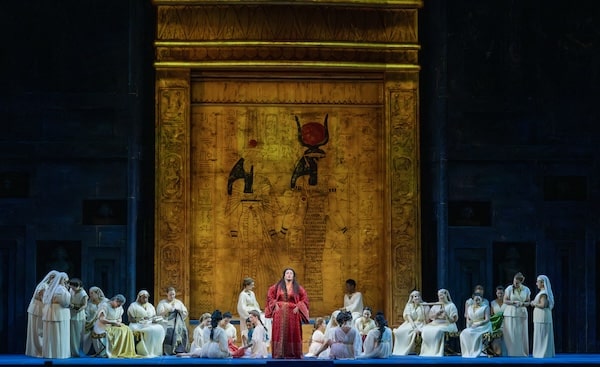Wanda at the window: The only known film of Landowska
Daily Comfort ZoneThe great harpsichordist at work, at home, in 1953.

The great harpsichordist at work, at home, in 1953.
There were protests during Christmas mass at Freiburg…

From the Berliner Zeitung: …How dangerous real music…

The Raiders of the Lost Tomb version. It’s…

A tenor who was audibly below par, an…

Session expired
Please log in again. The login page will open in a new tab. After logging in you can close it and return to this page.
And how wonderful to see RCA producer Jack Pfeiffer, to whom the music world owes such an enormous debt of gratitude.
Splendid! You remind me that the first recordings I bought were Wanda Landowska playing harpsichord, and Glenn Gould
(not playing harpsichord!) Liberty, and a space to dance in.
Thanks for this. There are some
breath-taking still photos at the end.
WOW!!
She was wonderful. And those fingers!
Exceptional!
Many years ago I had the interesting experience of attending an informal gathering in a home where the esteemed keyboard artist Ton Koopman, who was in town in play a concert, played some things for a select groups and then talked or answered questions from a roomful of mostly period instrument practitioners and Historically Informed Performance devotees. He was asked about Wanda Landowska in terms which suggested the questioner (and I suspect most others in the room) hoped that Koopman would trash her style and her instrument to support their own biases but that he resolutely refused to do, other than to say that when playing the contemporary repertoire that she commissioned for harpsichord that the music really demanded and needed the larger heavy Pleyel harpsichord she used.
But he did say that he had carefully studied photographs of her hands at the keyboard over the years and arrived at the conclusion that she deliberately had them take on a sort of talon-like arch of the hand and fingers for such photographs in order to confound pianists/harpsichordists as to just how she could play so fluently holding her fingers like that, and he, Koopman, suspected her actual physical approach to the instrument in performance did not look much like those photos. I do not know if he had ever seen this film, which at times directly supports and refutes his theory, but I think he had a point about a certain exaggerated quality to the hand posture in her publicity photographs, just as there is to her style of dress and even her facial expressions.
Perhaps it is my own bias as a (non-HIP) violinist but I think her finest playing on commercial recordings is the Bach Sonata in E with Yehudi Menuhin done for RCA Victor. There is also a marvelous photograph portrait by Yousef Karsh of the two of them.
I had a pianist/harpischordist friend, now long gone, who studied with Landowska at her home in Connecticut around the time this footage was made. The lessons were in French by the way.
I can confirm that this video accurately shows how she played-how could it not? My friend confirmed this, and I remember we watched this when it came out on VHS tape years ago. He showed me gloves with the fingers cut out that the students had to wear to reinforce the talon like technique. (he kept them 30+ years after his lessons) He also explained that her method involved imagining an iron rod that you rested the end of your palms on, and played only with the fingers.
He, and his”patroness” bought the last two Pleyel harpischords made-though by the time I met him they were unacceptabel as public instruments-and his recitals used a later built historically accurate instrument. Oh, he soon after his lessons dropped Landowska’s peculiar cramping technique-though as with all great instrumentalists, the idiosyncratic technique worked for her.
Was she not in Wuthering Heights (1939) as an unbilled performer at the party?
She was not but her student.
Alice Ehlers ranked as one the leading harpsichordist of our day. She was unexcelled in her authoritative and sensitive interpretations of J.S. Bach’s keyboard works. She had a long association with Dr. Albert Schweitzer both as a student as a colleague of his. Ehlers rendered Schweitzer’s hospital through benefit concerts (a selection of letters these two great personalities exchanged between the years of 1928 and 1965 was published in the book Albert Schweitzer & Alice Ehlers – A Friendship in Letters). She has concretised widely in the USA, South America, Europe, Israel and Egypt as soloist with major symphony orchestras and in solo and chamber recital. She was a featured performer in Samuel Goldwyn’s Wuthering Heights (1939). She performed onscreen at a double-manual harpsichord Mozart’s Rondo Alla Turca for the assembled party guests.